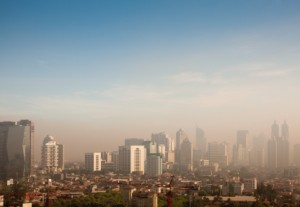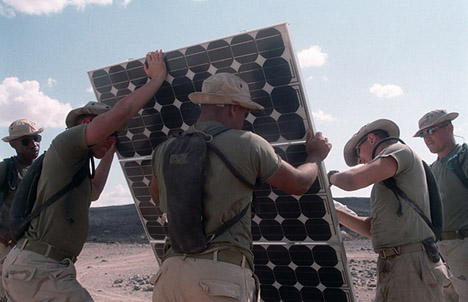In a prior post, The sensible center, I noted that those seeking to de-rail or delay policy addressing man-made global warming aimed to not simply deny the phenomenon or its cause, but to seed uncertainty among the populace so as to encourage doubt and inaction.
 With that in mind, I read with interest media coverage of a recent polling showing that some solid majorities of the U.S. population now believe that global warming is indeed a real and currently occurring phenomenon (and with the bake and burn most of the country experienced this past summer you might expect an uptick in that perception).
With that in mind, I read with interest media coverage of a recent polling showing that some solid majorities of the U.S. population now believe that global warming is indeed a real and currently occurring phenomenon (and with the bake and burn most of the country experienced this past summer you might expect an uptick in that perception).
So, progress, right?
Well, kind of. See recent polling also shows that, while a majority believes the climate is warming, only a minority believe human activity is the cause. Worse, that belief in a cause divide seems to break down solidly along political party identity lines.
So, yeah, more work to do to get the message through. Maybe a push on the appeal-to-authority front, but where to find an authority? In PR, leaning on the expert opinion of an authority to buttress a claim is a time-tested technique for swaying opinion. It’s why 4-out-of-5 dentists recommend sugarless gum for their patients who chew gum. Those opposing action on global warming know this is an effective technique and made delegitimizing the most basic authorities – climate scientists – a top priority in their ongoing campaign of doubt and deceit. The scientists are all lying and conspiring about this global warming stuff so that they can get more government study grants and keep their cushy jobs in the ivory tower….or something.
But what about the insurance companies? Just this week, a very large re-insurance company (essentially, an insurance company for insurance companies) called Munich RE issued a report stating that North America has seen a dramatic increase in weather-related claims over the past decade and that “it is quite probable that changing climate conditions are the drivers. The climatic changes detected are in line with the modeled changes due to human-made climate change.”
Catch that last part? The multi-billion dollar international business entity said that climate change is real and likely being driven by human activity and, BTW, it’s costing you money – lots of money. It will be interesting to watch the deep-pocketed vested interests arrayed against the CO2 regulation battle to delegitimize the deep pocketed interests, such as large insurance companies, whose business models are jeopardized by an increase in CO2 levels and the costly extreme weather events it spawns. Oh, and the Pentagon, too – that’d be an interesting fight.








